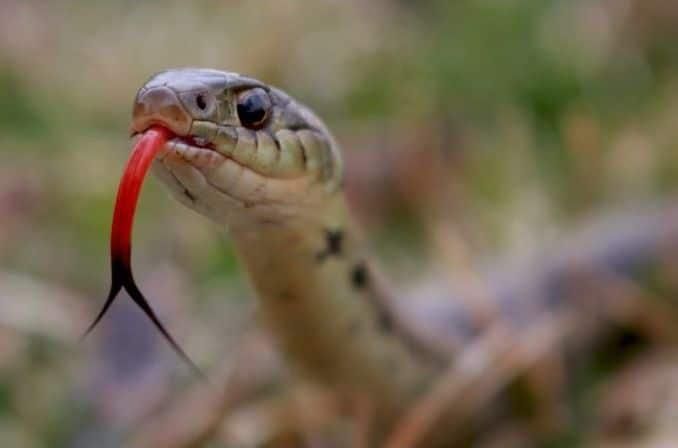|
The snake visited the poet’s water trough because it was ___ and it needed to quench its thirst. |
Card: 1 / 38 |
|
What does the poet's behavior indicate about his character when he waits for the snake to finish drinking? |
Card: 3 / 38 |
|
True or False: The snake made a lot of noise while drinking water from the trough. |
Card: 7 / 38 |
|
What internal conflict does the poet experience regarding the snake he encounters? |
Card: 9 / 38 |
|
The poet feels a conflict between the education and social conventions that dictate he should kill the snake due to its perceived danger, and his personal affection for the snake, which he sees as a guest deserving of hospitality. |
Card: 10 / 38 |
|
True or False: The poet ultimately decides to kill the snake despite his initial hesitation. |
Card: 11 / 38 |
|
False. The poet does not kill the snake; instead, he feels honored by its presence.  |
Card: 12 / 38 |
|
The snake's slow and dreamlike movement after drinking suggests it is calm and content, embodying a sense of peace rather than aggression. |
Card: 14 / 38 |
|
In what way does the poet describe the snake's departure from the water trough? |
Card: 15 / 38 |
|
The poet describes the snake as moving slowly and dreamily, as if it is in a tranquil state, before it curves around and ascends back into the crack in the wall from where it came. |
Card: 16 / 38 |
|
The poet feels agitation and a sense of protest against the snake's retreat, indicating a conflict between fascination and a desire to harm. |
Card: 18 / 38 |
|
The act of throwing a log at the snake symbolizes the poet's internal conflict between ___ and ___ regarding nature. |
Card: 19 / 38 |
 Unlock all Flashcards with EduRev Infinity Plan Starting from @ ₹99 only
|
|
True or False: The poet expresses regret for his action of throwing a log at the snake and wishes for it to return. |
Card: 21 / 38 |
|
The poet criticizes the 'voice of education' for teaching him to kill snakes without reason, paralleling it with the senseless killing of the albatross by the Ancient Mariner. |
Card: 24 / 38 |
|
Fill in the blank: The poet's fascination with the snake is mixed with a feeling of ___ after he throws the log. |
Card: 25 / 38 |
|
What does the poet imply about the snake's behavior in relation to its royal status? |
Card: 27 / 38 |
|
The poet implies that the snake behaves with dignity and grace, akin to a king, which reflects its royal status as the king of the underworld.  |
Card: 28 / 38 |
|
True or False: The poet believes he has treated the snake with the respect it deserves. |
Card: 31 / 38 |
|
False. The poet regrets his actions and acknowledges that he failed to treat the snake with due respect. |
Card: 32 / 38 |
|
The poet wishes to make amends by recognizing the snake's dignified nature and treating it with the respect befitting a king. |
Card: 34 / 38 |
|
True or False: The poet feels impatience while waiting for the snake to drink water. |
Card: 35 / 38 |
|
What does the poet observe about the snake’s physical characteristics as it drinks? |
Card: 37 / 38 |
|
The poet observes that the snake is yellow-brown in color, has a soft belly, and drinks silently, resting its throat on the stone bottom of the trough. |
Card: 38 / 38 |





















